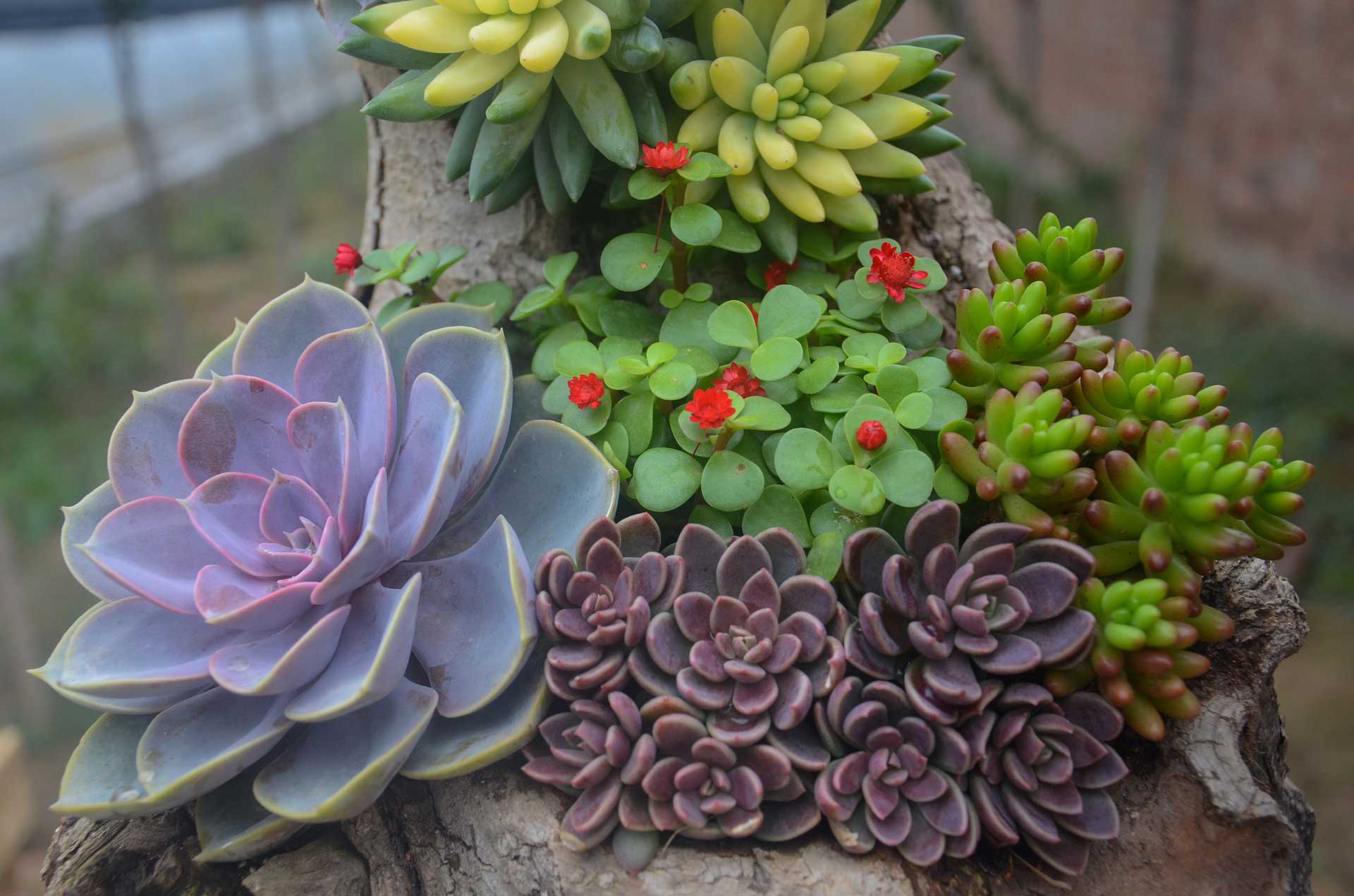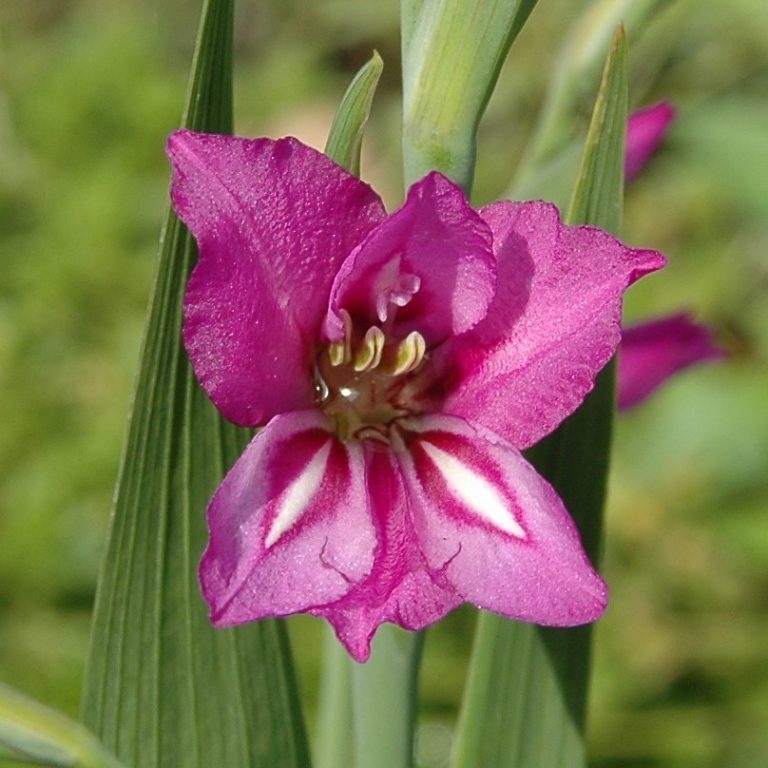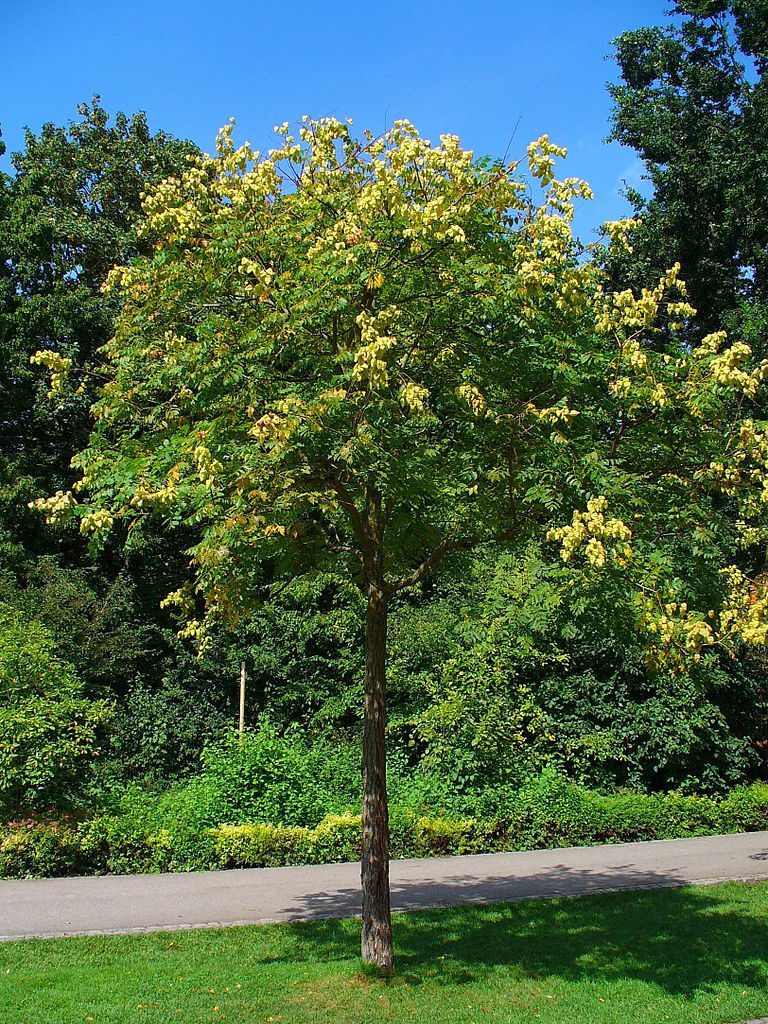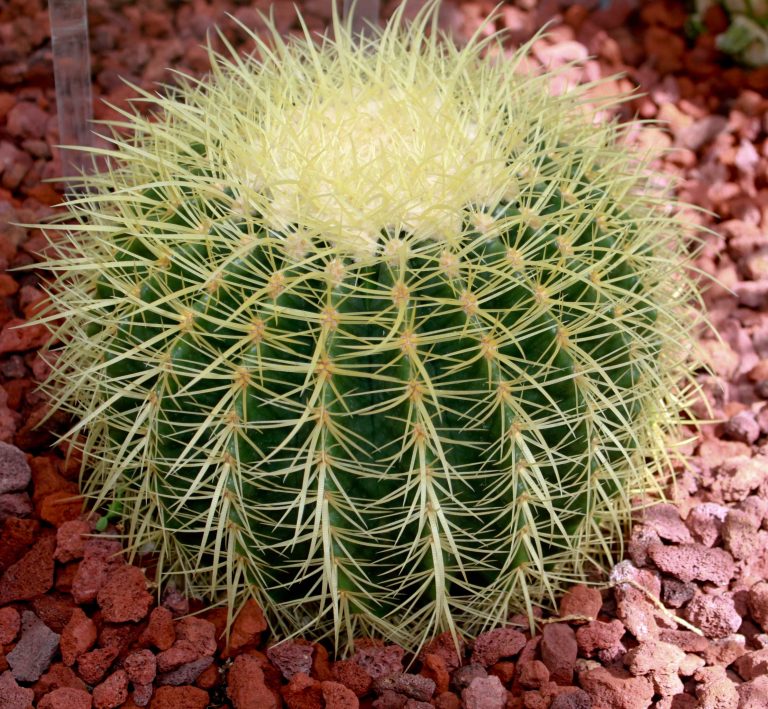Types of Succulents
The succulent plants, commonly termed as fat plants or mere succulents can be defined in botany as the plants that have thick and fleshy body parts when compared to the other normal plants. These thickened parts help to store water, as usual, these types of plants are found in hot climates and poor soil conditions. The name “succulent” is derived from “sucus”, a Latin word, which means sap or juice. Generally, any part of these plants can be thick and fleshy like stems, leaves and sometimes roots. Succulents are commonly seen in the gardens as ornamental plants, obviously due to their unusual structure and distinct appearance. Types of Succulent Plants
Succulent plants are found in around 60 plant families. Most members of the families like Agavoideae, Cactaceae, Crassulaceae and Aizoaceae are succulents. Such plants are endemic to the areas having low rainfall and high temperature. They have the capability to survive on least water sources like dew and mist. The families having succulents are:
Agavacea
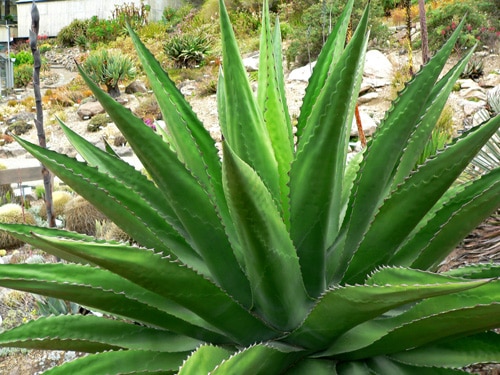
Agave gentryi – Photo by: Stan Shebs
The succulent monocotyledons of the American continent have distributed into many important succulent families, which includes the Agavaceae that produces flower spikes and distinctive rosettes. The Agavaceae family includes Prochnyanthes, Agave, Hesperaloe, Polianthes, Beschorneria, Yucca, Manfreda and Furcraea.
This species of Agavacea family produces many offsets, but each reset has only a few narrow and long leaves in the blue-gray shade. These leaves grow about 3 feet long and have bud imprints on the surface. The spike of this plant has flowers with greenish-yellow shade. This plant is hardy to cold climates. Some of the other succulent species of this family are Agave Americana, Agave x Arizonica and Agave Atenuate.
Aizoaceae
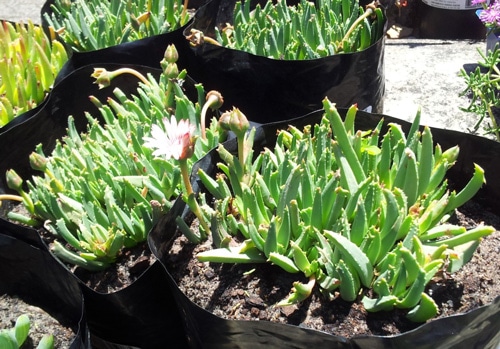
Acrodon bellidiflorus – Photo by: Abu Shawka
The Aizoaceae family is a large group, mainly endemic to the South African regions. It has around 120 genera that include more than 1800 species. Some species are endemic to the Pacific area and Australia. All species of this family are succulent plants, but includes a vast range of different succulent structures such as the pebble-like leaf to small shrubs having fleshy leaves.
This species of Aizoaceae family is endemic to the South African regions, where there is both winter and summer rainfall. These plants have light pink, large flowers with a stripe of darker shade found in between the petals. Some other examples, Aloinopsis Orpenii , Antimima Concinna and Aptenia Cordifolia.
Aloaceae
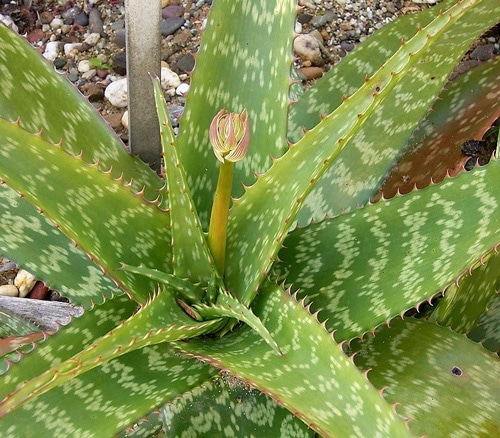
Aloe greenii – Photo by: Frank Vincentz
Most of the succulent monocotyledons from the Old World group are placed in the Aloaceae, a mid-size family of succulents having “rosulate” (Wiktionary: Arranged in small rose-like clusters.) leaf including Astroloba, Chortolirion, Aloe, Gasteria, Bulbine, Poellnitzia, Haworthia and Lomatophyllum.
Rosettes of this species are large and formed from the pale green leaves. The lower part of the rosettes have reddish prickles and white pustules. The edges of the leaves have several sharp and small reddish teeth. These plants are inhabited in the dry and hot mountainous areas of Zimbabwe. Some examples of this family are Aloe Affinis, Aloe Africana and Aloe Arborescens.
Amaranthaceae
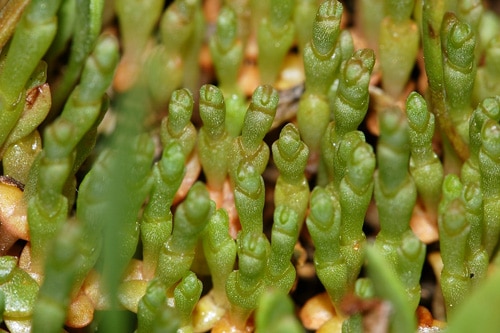
Salicornia ramosissima- Photo by: Fritz Geller-Grimm
This is a large family that includes 180 genera and around 2,500 species of shrubby plants and herbs. Many species of this family have a characteristic thickened stem node. Very small numbers of plants from this family are succulents.
This species is an annual succulent plant that grows up to 1 foot in height. Small hermaphrodite flowers bloom in the month of August, and usually pollinated through the wind. This species is endemic to the lower areas of the salt marshes. Other members of the family are Salicornia Europea, Salicornia Ramosissima and Salicornia Rubra.
Amaryllidaceae
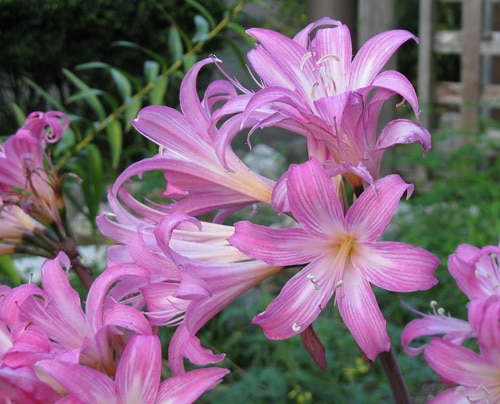
Amaryllis belladonna – Photo by: KENPEI
The Amaryllidaceae family consists of 870 species belonging to 50 genera of rhizomatous or bulbous perennial herbs that have alternate leaves of strap-shaped, which are considered as semi-succulent. The rhizomes and bulbs are also sometimes considered as organs having succulent storage.
This species has a leafless stem on which, clusters of white and pink trumpet-shaped flowers are produced. Following blooming, leaves of strap-shape start to develop in two rows. This type is found in many areas in the world with a Mediterranean climate, and also in the western part of the Cape province, winter rainfalls are received. Other examples are Boophane Haemanthoides, Clivia Gardenia and Clivia Miniata
Anacardiaceae
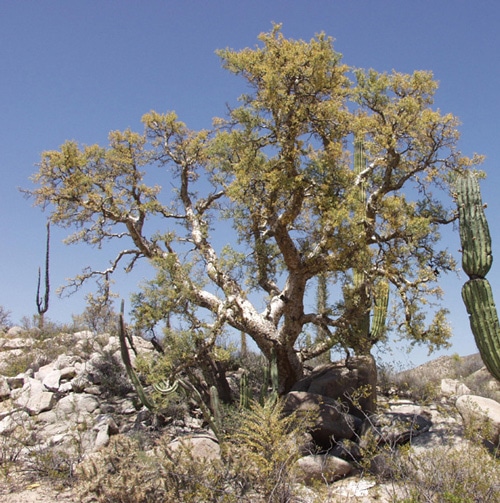
Pachycormus discolor – Photo by: Tomás Castelazo
The Anacardiaceae Family includes 800 species and 75 genera of sub-tropical and tropical trees, vines and shrubs and bearing drupes. Most of the plants from the Anacardiaceae family are non-succulent, although the Pachycaul (Wiki: plants with a disproportionately thick trunk for their height, and few branches) shrubs seen in Pachycormus and Operculicarya can be easily propagated in a greenhouse with warm temperature and “self-bonsai” style in a tiny pot.
This species of Anacardiaceae family is endemic to Baja California. It has a thick branched, trunk with peeling bark. The leaves of this species are pinnate and the flowers are 5-petaled tiny structures with a pink shade.
Apiaceae
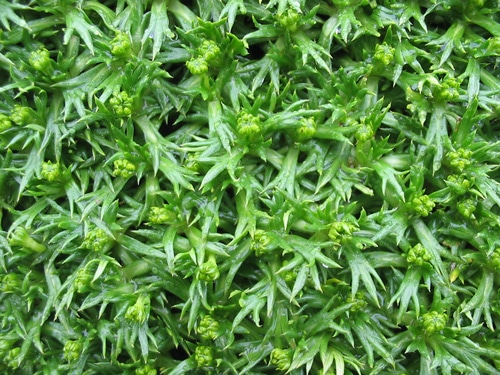
Azorella trifurcata – Photo by: Christian Hummert
The Apiaceae family includes about 300 to 400 genera and around 2500 species. This family includes annual herbs, trees and shrubs, most of them with tuberous or thickened roots and deeply cut leaves with hollow stems. Very few members are considered as succulents.
This species is an evergreen succulent plant that has fleshy stems and green, glossy rosettes that form low mounds and rubbery hard mats on the surface of the ground. It is a drought-resistant plant that requires enough drainage to survive. It inhabits in the Falkland Islands and Chile. The other species are Crithmum Maritimum.
Apocynaceae
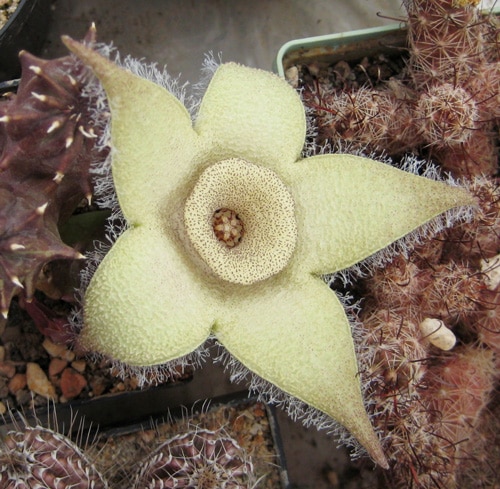
Orbea ciliata – Photo by: Michael Wolf
The Apocynaceae family is a large group of plants that consists of 2000 species that include subtropical and tropical trees, herbs, shrubs and vines. In the subfamily Asclepiadaceae and genera like Pachypodium, Adenium and Plumeria, plants are stem succulents.
This succulent plant from the Karroo of South Africa has beautiful, pale-white flowers with no smell, and grows about 7.5 cm in diameter. It is obviously suitable for display purpose, and can be grown easily. It prefers warm climate, but there are cases, where it has survived the cold U.K climate in the cold frame. Examples are Frerea Indica, Orbea Hardyi (Stultitia Hardyi) and Huernia Boleana
Araceae
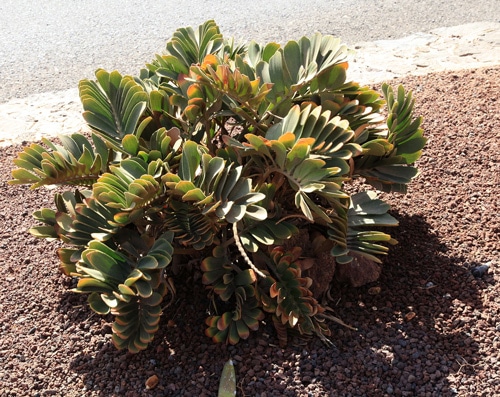
Zamioculcas zamiifolia – Photo by: Frank Vincentz
The Aracea family is in the Aroid group (The Free Dictionary: Any of various perennial herbs in the family Araceae, having tiny flowers crowded in a spadix that is subtended by a spathe) that consists of mainly tropical monocotyledons and has members from 105 genera and 3300 species, most of them non-succulent. The Zamioculcas, an African genus, has the only succulent Aroid, Zamioculca of Zamiifolia.
This species has thick, short succulent rhizomes out of which, succulent pinnate leaves are produced that have many glossy, basally-thickened greenish leaflets. Often, these leaflets break off from the plant, which are used for propagation purpose. The flowers are a yellow colored spadix that grows to about 2 to 3 inches.
Asteraceae
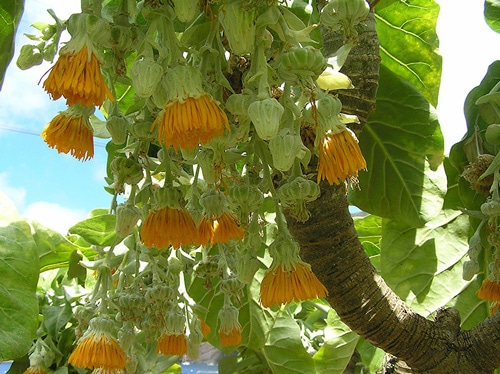
Dendroseris Litoralis – Photo by: Spencer C.H. Barrett
The Asteraceae family is the second largest flowering plant family that includes around 1100 genera and more than 20,000 species. But, only a few genera like Kleinia, Othonna, Notonia and Senecio include succulent members. Most of the succulent plants are leaf-succulent, and the others are stem succulent.
This herb is endemic to Southern Argentina. Its mat-forming structure has tiny rosettes and succulent leaves in tiny lanceolate structure. The other examples are Dendroseris Litoralis, Helichrysum Milfordiae and Leptonella Dendyi.
Balsaminaceae

Impatiens irvingii – Photo by: Warren McCleland
The Balsaminaceae family consists of only 2 genera, but has 800 different types of species, and is widely distributed. These species consist of sub-shrubs, annual herbs as well as perennial herbs. Most of this type belongs to the genus Impatiens, and many of them are stem succulent plants. Some of the examples are Impatiens Niamniamensis, Impatiens Repens and Impatiens Irvingii.
Begoniaceae
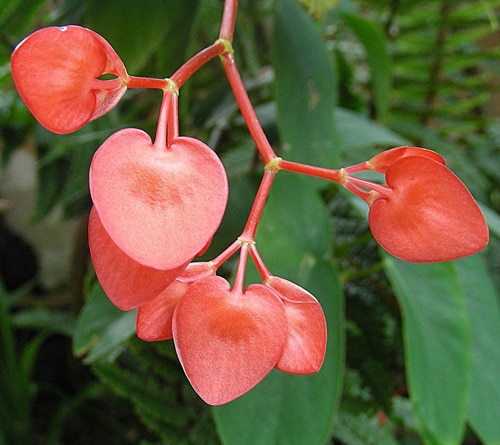
Begonia Peltata – Photo by: Dick Culbert
The Begoniaceae family consists of 2 genera and more than 1400 species, which include tropical flowering perennials. Most of them are stem succulents from Asia and America along with some African species. Some of the examples are Begonia Conchifolia, Begonia Fuschioides, Begonia Radicans and Begonia Peltata.
Bromeliaceae
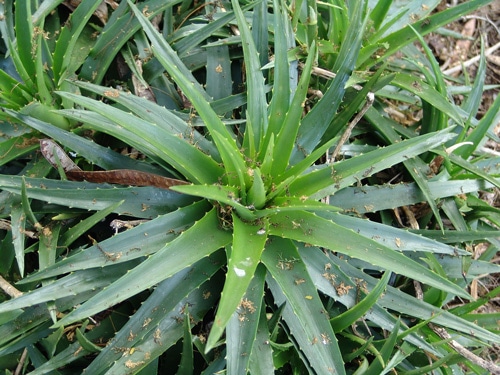
Dyckia brevifolia – Photo by: Drew Avery
The Bromeliaceae family is vast and large, consisting of 1400 species that includes tropical and sub-tropical flowering plants belonging to the group of New World. Many species of this family store water in the gap shaped like “urn”, formed from the structure of overlapped rosettes. This water habitat is inhabited by small creatures like frogs. The genera of succulent plants are Dyckia, Hechtia, Deuterocohnia and Puya. Examples are, Deuterocohnia Brevifolia, Deuterocohnia Longipetala, Deuterocohnia Lorentziana and Dyckia Frigida.
Burseraceae
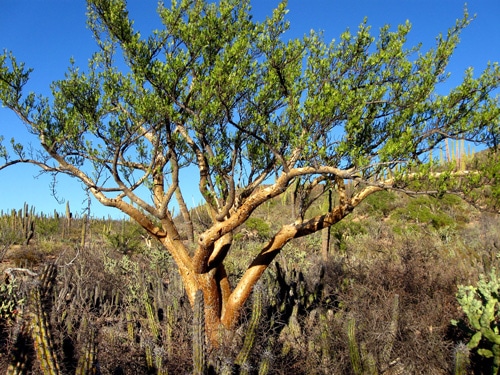
Bursera microphylla
The Burseraceae is a plant family of about 540 species and 18 genera, out of which, the Bursera genus includes the New World group’s Elephant trees that have thick succulent trunks. These trunks are often found with decorative bark that peels off and fragrant wood. Example is Bursera Microphylla.
Cactaceae
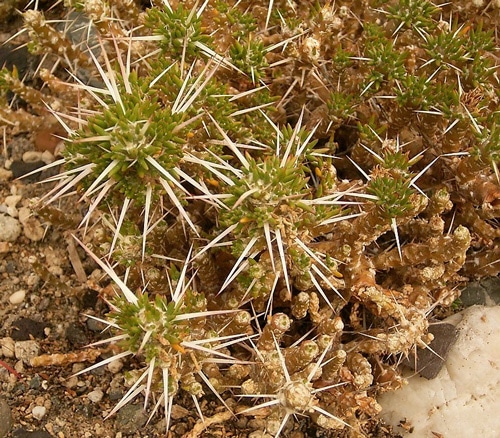
Maihuenia patagonica – Photo by: Frank Vincentz
The Cactaceae is a large family, and one of the most peculiar group of flowering dicotyledonous succulent plants that consists of around 90 genera and around 2500 species. There is a great diversity in the structures of these succulent plants ranging from less than an inch to more than ten foot plants. They are exclusively found on the American continent, and also in some places like West Indies. Examples are Maihuenia Patagonica, Maihuenia Poeppigii and Brasiliopuntia Brasiliensis.
Campanulaceae
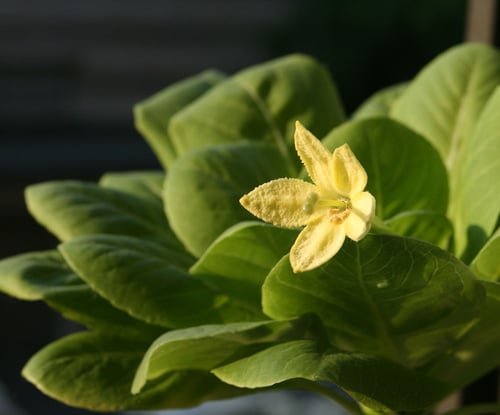
Brighamia Insignis – Photo by: PaulT
The Campanulaceae family consists of 2000 species and 70 genera of shrubs, flowering herbs and small trees. Out of this, only Brigham genera has the succulent species. Example is Brighamia Insignis.
Caryophyllaceae
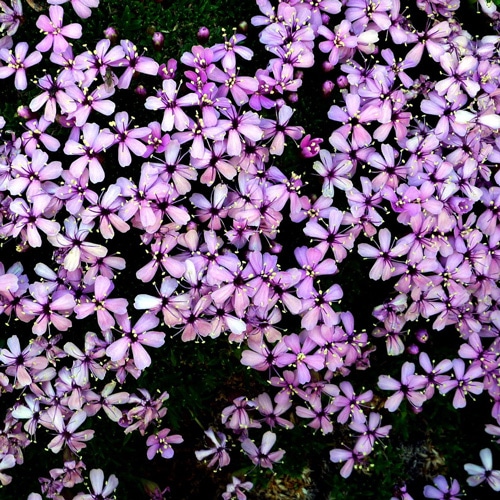
Silene Acaulis – Photo by: Isidre Blanc
The Caryophyllaceae family is composed of 88 genera and around 3000 species of flowering plants with some shrubby genera. Most of the Caryophyllaceae members are non-succulent. Only some are succulent exceptions like Honckenya Peploides, Silene Acaulis.
Commelinaceae
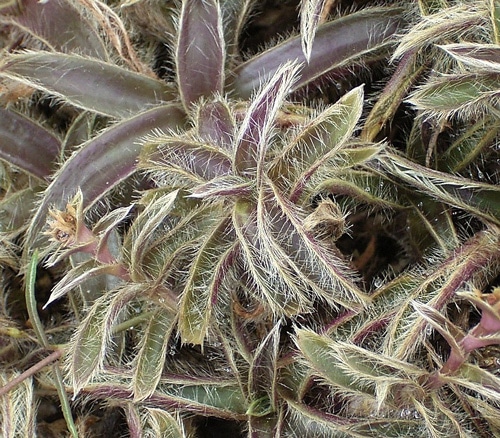
Cyanotis Somaliensis – Photo by: Frank Vincentz
The Commelinaceae family is composed of more than 40 genera and around 600 species. Succulence is commonly found in these plants, and often stems are found to be thickened with nodal swelling. Examples are Callisia Soconuscensi and Cyanotis Somaliensis.
Crassulaceae
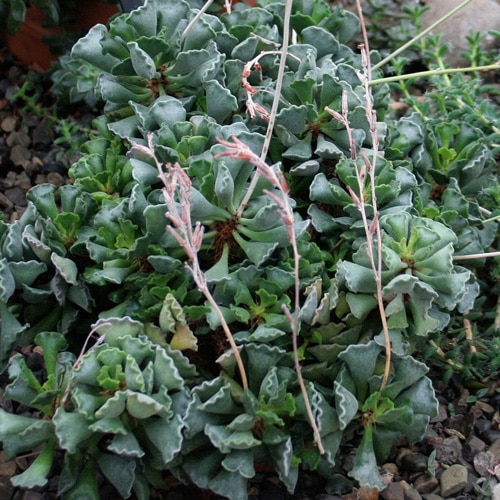
Adromischus cristatus – Photo by: Dave Pape
This large family Crassulaceae consists of 1500 species, most of which exhibit leaf succulence. Some examples are Adromischus Cooperi and Adromischus Cristatus.
Cucurbitaceae
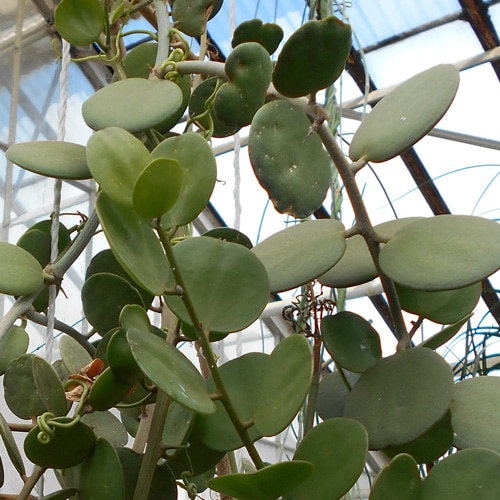
Xerosicyos danguyi – Photo by: Salicyna
The Cucurbitaceae family is a mid-size group of 800 species and 119 genera, out of which, many species possess stem with succulence, and some are considered as Caudiciform plants. Examples are Kedrostis Africana and Xerosicyos Danguyi.
Didiereaceae
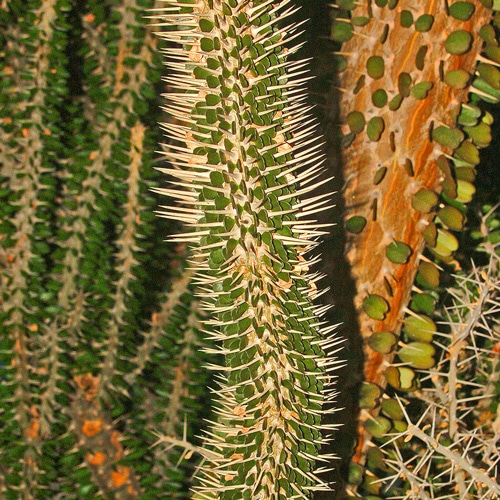
Alluaudia Montagnacii – Photo by: Hectonichus
This small family Didiereaceae is composed of 11 species and 4 genera of peculiar spiny-stemmed succulents. The genera are Alluaudiopsis Alluaudia, Didierea and Decarya. Examples are Alluaudia Ascendens, Alluaudia Montagnacii.
Dioscoreaceae
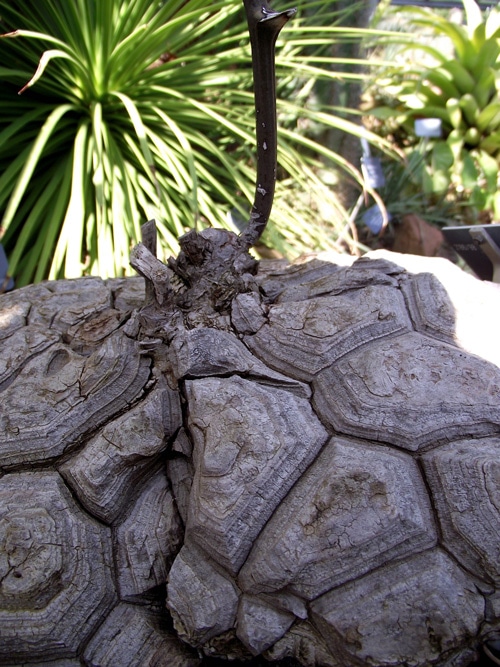
Dioscorea Mexicana – Photo by: Rillke
The Dioscoreaceae family is a small group of over 600 species and 8 genera that includes many succulent Caudiciforms and peculiar species with tuberous root. Examples are Dioscorea Elephantipes and Dioscorea Mexicana.
Dracaenaceae
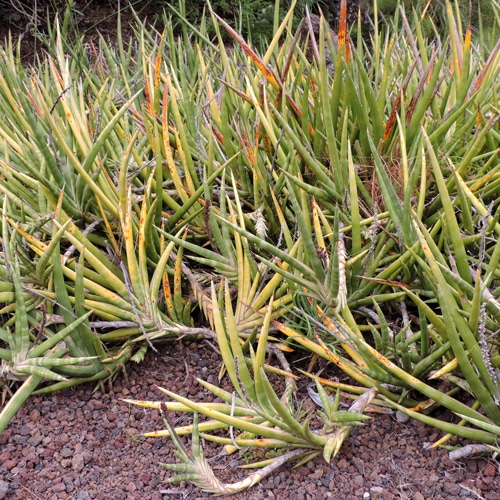
Sansevieria suffruticosa – Photo by: Krzysztof Ziarnek
The Dracaenaceae family consists of about 160 species of shrubs, tropical trees and herbs, out of which some plants have parallel-veined, semi-succulent or fully succulent, fibrous leaves. Examples are Sansevieria cylindrical and Sansevieria Suffructicosa.
Euphorbiaceae
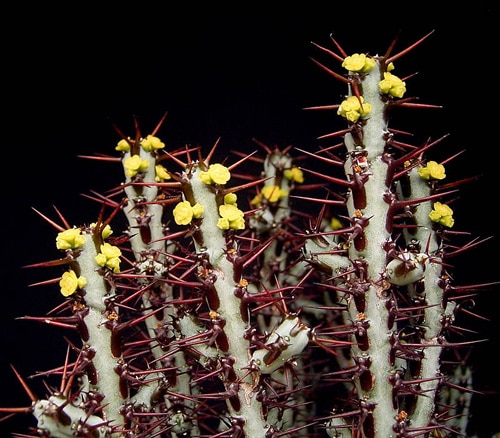
Euphorbia aeruginosa – Photo by: Frank Vincentz
The Euphorbiaceae family is very large and widely distributed that includes 300 genera and more than 7700 species. Succulent plant species are present in the Euphorbia genera. Examples are Euphorbia Abyssinica and Euphorbia Aeruginosa.
Fouquieriaceae
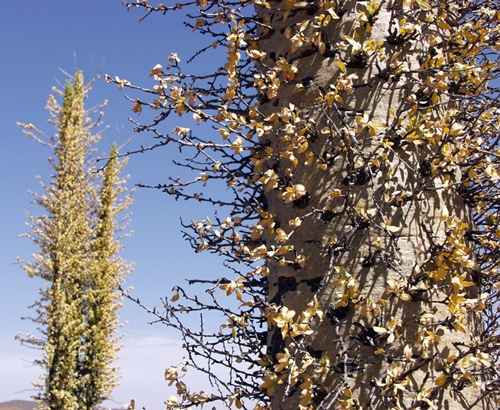
Fouquieria Columnaris – Photo by: Tomás Castelazo
The Fouqieriaceae family has only one genus that consists of spiny succulent shrubs and trees. This genus is termed as Fouquieria. Examples are Fouquieria Columnaris and Fouquieria Columnaris.
Geraniaceae
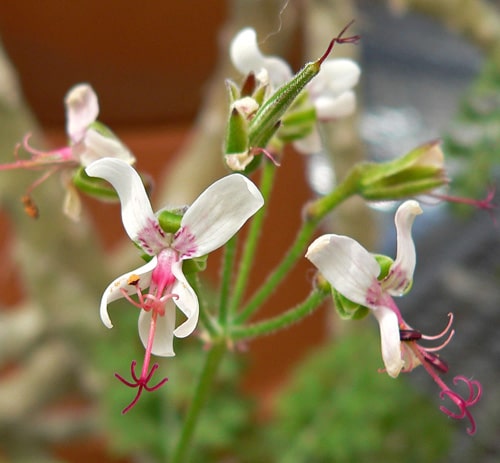
Pelargonium carnosum – Photo by: Stan Shebs
The Geraniaceae family is a widespread group with 800 species belonging to 7 genera. Caudiciform and choice succulent belongs to the Monsonia and Pelargonium genus. Examples are Pelargonium Bowkeri and Pelargonium Carnosum.
Gesneriaceae
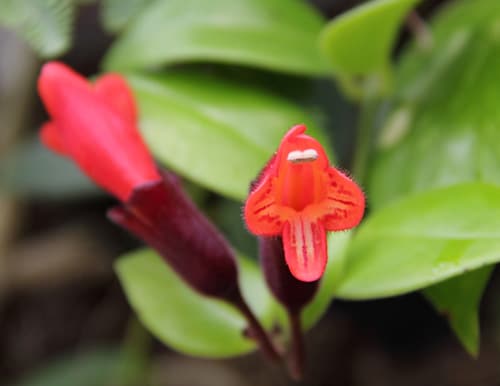
Aeschynanthus Pulcher – Photo by: Fan Wen
The Gesneriaceae family consists of around 3200 species in 150 genera, out of which many household species have some degree of succulence. Examples are Aeschynanthus Longicaulis and Aeschynanthus Pulcher.
Hyacinthaceae
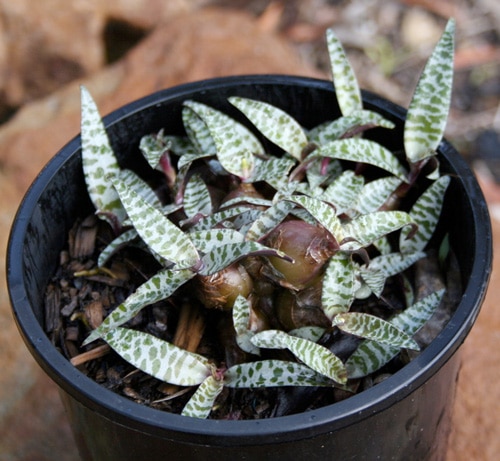
Ledebouria socialis – Photo by: Dr. David Midgley
The Hyacinthaceae family includes around 70 genera and more than 1000 species, out of which only a few species display succulent leaves. Examples are Ledebouria Socialis and Ornithogalum Thyrsoides.
Icacinaceae

Pyrenacantha malvifolia – Photo by: Hectonichus
The Icacinaceae family is a heterogeneous group of about 55 genera and more than 400 species, out of which, the genera Pyrenacantha consists of succulent plants. Example is Pyrenacantha Malvifolia.
Lamiaceae
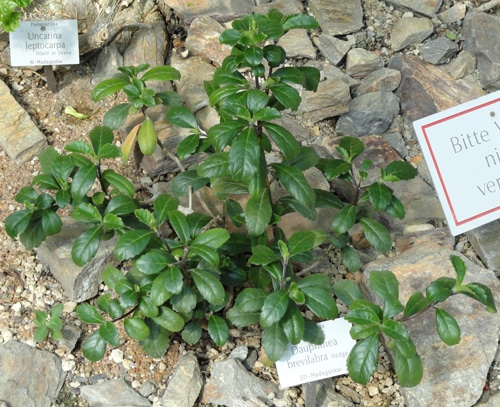
Dauphinea brevilabra
The Lamiaceae family is a large group of plants that includes about 6500 species and 230 genera of shrubby plants. Only a few species show some degree of succulence. Examples are Dauphinea Brevilabra and Perrierastrum Oreophilum.
Melastomataceae
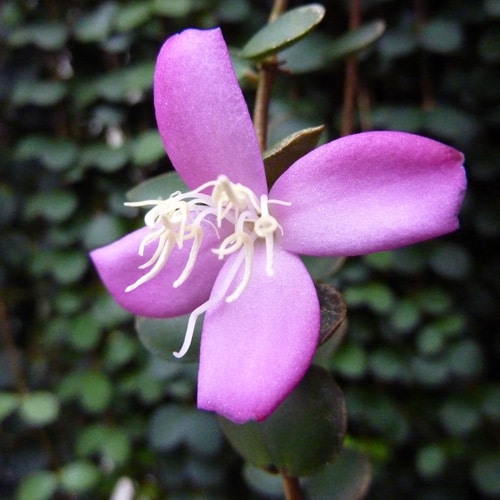
Medinilla sedifolia – Photo by: James Steakley
The Melastomataceae family consists of 4000 species and 200 genera of dicotyledonous flowering shrubs, herbs and tree. Only the genera Medinilla has succulent plants. Example is Medinilla Sedifolia.
Menispermaceae
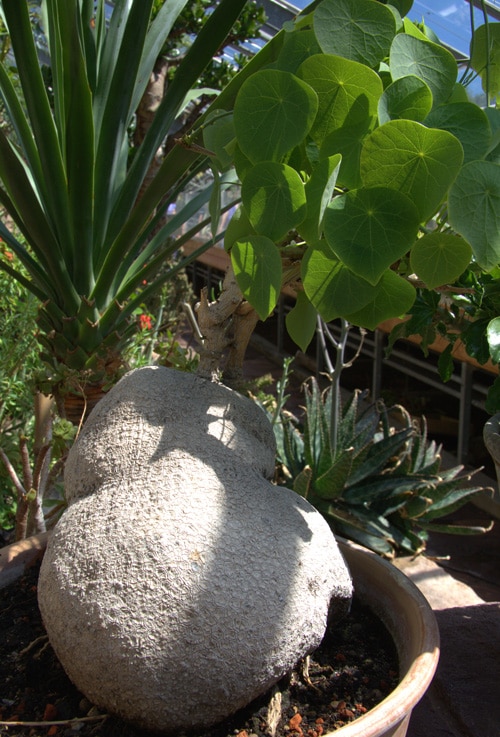
Stephania suberosa – Photo by: C T Johansson
The Menispermaceae family consists of 450 species and 70 genera. The genus Stephania includes caudiciform plants with succulent Vining growth on the top. Tinospora are succulent plants with Vining stems. Examples are Chasmanthera dependens and Stephania Suberosa.
Moraceae
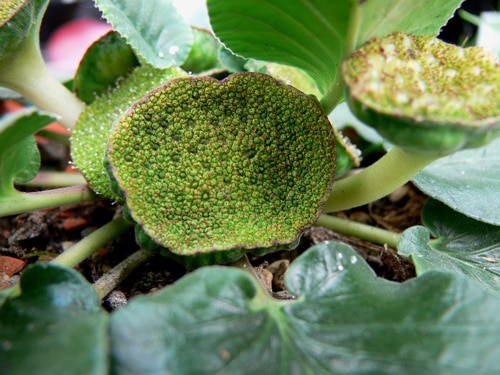
Dorstenia brasiliensis – Photo by: Winfried Bruenken
The Moraceae family consists of 37 genera and more than 1100 species, including shrubs, herbs and trees, out of which, the genera Ficus has some species of pachycaul succulents. Examples are Dorstenia barteri var. Multiradiata and Dorstenia Ellenbeckiana.
Nolinaceae
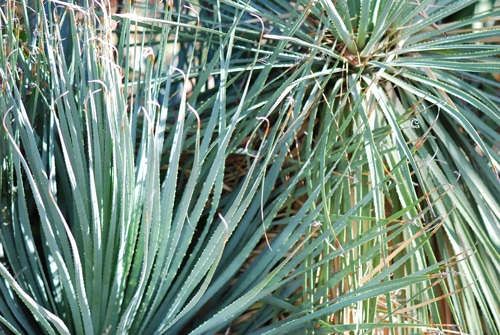
Dasylirion acrotrichum – Photo by: Peter Halasz
The Nolinaceae family has four genera, namely Beaucarnea, Calibanus, Dasylirion, and Nolina. Most of the members of this family have some degree of succulence like swollen trunk or stout succulent caudexes. Examples are Beaucarnea stricta and Dasylirion acrotrichum.
Orchidaceae
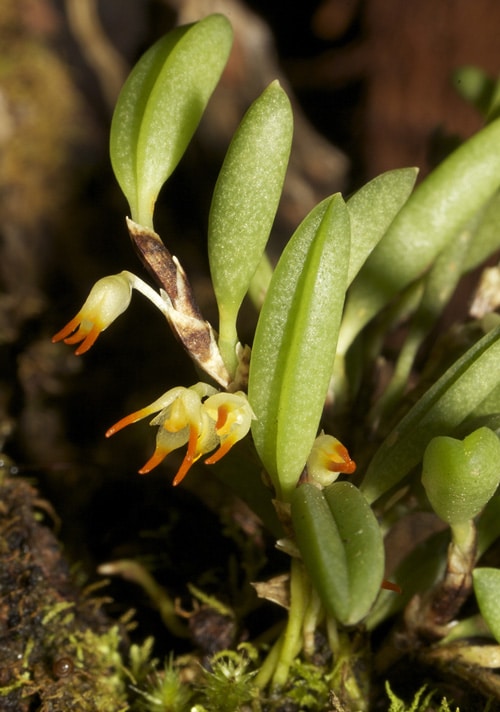
Bulbophyllum gargarense (Orchid)
The largest group in the Magnoliophyta division (flowering plants) is the Orchidaceae family that consist of around 25,000 known species. Many members like the Epiphytes have succulent-like lifestyle by storing food and water in the thick Psuedobulbs.
Passifloraceae Family
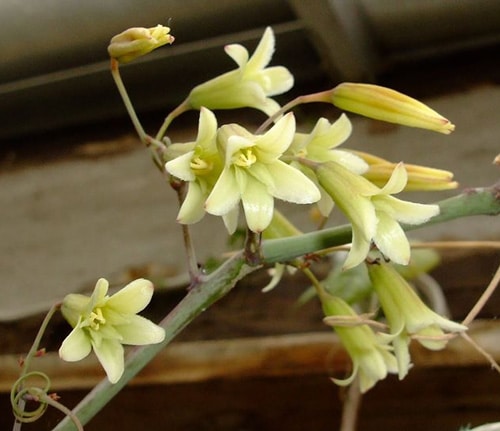
Adenia digitata – Photo by: Joachim Beyenbach
The Passifloraceae family consists of 650 species belonging to18 genera, and only a single genus known as Adenia is composed of the succulent plants. An example is Adenia digitata.
Pedaliaceae
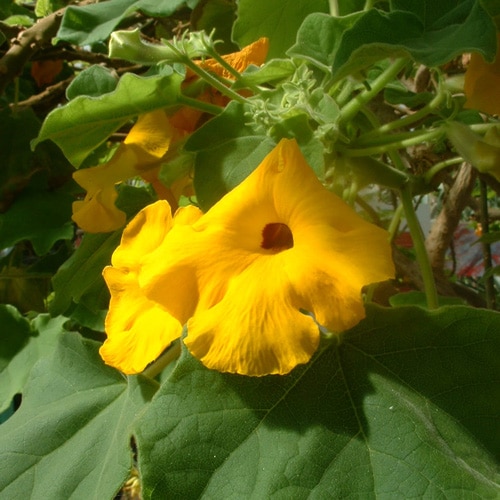
Agave gentryi – Photo by: Jeff DeLonge
The Pedaliaceae family is a group of 16 genera and about 100 species, of which Uncarina genus has succulent plants. Examples are Uncarina grandidieri.
Piperaceae
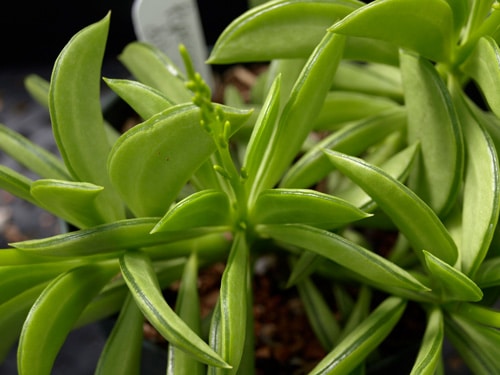
Peperomia dolabriformis – Photo by: Scott Zona
The Piperaceae family is composed of1400 species from 5 genera of perennial plants with both non-succulent and succulent members. Examples are Peperomia abyssinica and Peperomia dolabriformis.
Portulacaceae
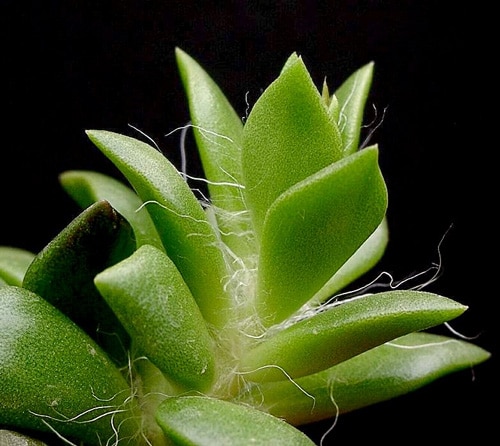
Anacampseros rufescens – Photo by: Frank Vincentz
The Portulacaceae family includes more than 450 species of herbs, leaf succulents and shrubs belonging to 12 genera like Anacampseros, Ceraria, Avonia, Portulacaria and Portulaca (Purslanes). Example is Anacampseros rufescens.
Rubiaceae
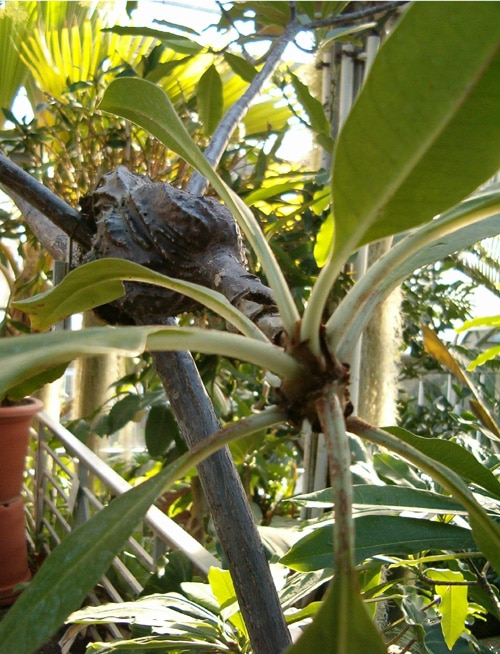
Myrmecodia tuberosa – Photo by: BotBln
The Rubiaceae family is a group of 650 genera that includes around 13,000 species of shrubby plants and herbs. Out of these, some genera like Anthorhizza, Hydnophytum, Myrmecodia, Myrmephytum, Phylohydrax and Squamellaria consist of Caudicifirm succulent species. Example is Myrmecodia tuberosa.
Ruscaceae
Eriospermum confusum – Photo by: Flowering Plants
The Ruscaceae family consists of Monotyledenous flowering shrubs and plants with tubers and fleshy rhizomes. The Eriospermum Jacquin genus from this family consist of more than a 100 types of tuberoses succulent species. Examples is Eriospermum confusum.
Vitaceae
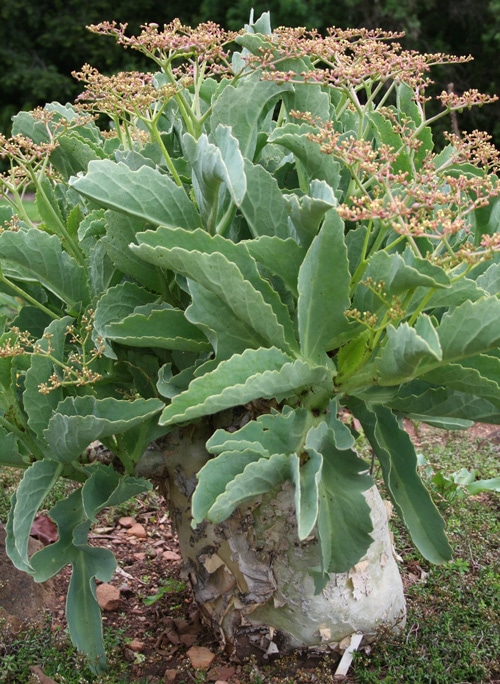
Cyphostemma juttae – Photo by: Marco Schmidt
The Vitaceae family includes 800 species and 13 genera, including the Cissus and Cyphostemma genera that have succulent species. Examples are Cissus Quadrangularis and Cyphostemma Juttae.
Zygophyllaceae
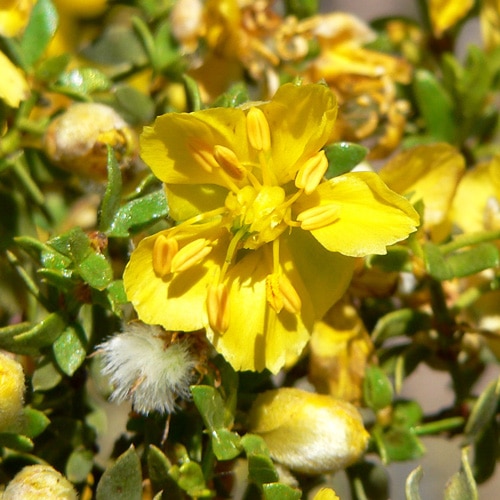
Larrea tridentata – Photo by: Stan Shebs
The Family Zygophyllaceae consists of 240 species, including herbs and woody plants, of which Augea, Larrea, Zygophyllum genus have succulent species. Example is Larrea Tridentata.

Having discovered a fondness for insects while pursuing her degree in Biology, Randi Jones was quite bugged to know that people usually dismissed these little creatures as “creepy-crawlies”.

